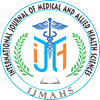CHARACTERIZATION AND DEGRADATION OF PHARMACEUTICAL PRODUCT LEVOFLOXACIN BY SELECTED BACTERIAL ISOLATES
Pages : 17-23Download PDF
Abstract
Aim: Effective bioremediation techniques are required to lessen the ecological impact of the commonly used fluoroquinolone antibiotic levofloxacin due to its environmental persistence.
Method: Nine of the 11 bacterial isolates that were obtained from soil samples using an enrichment technique in this investigation showed resistance to levofloxacin concentrations as high as 500 ppm. Isolates LFX-2a, LFX-8a, and LFX-10a shown robust growth at all tested concentrations, according to screening for Maximum Tolerance Level (MTL).
Results: After 72 hours, LFX-10a had the highest degradation rate, at 71.24%. At 50.24%, the consortium DEF (LFX-2a, LFX-8a, and LFX-10a) likewise displayed notable degradation. Seven of the isolates were motile and varied in their endospore and capsule formation, according to morphological characterization, which showed a mixture of rod-shaped bacteria that were both Gram-positive and Gram-negative. Numerous metabolic capacities, such as universal catalase synthesis, nitrate reduction in seven isolates, and varied responses in IMViC and sugar fermentation tests, were validated by biochemical analyses.
Conclusion: Although extended exposure may cause stress, growth tests revealed that the peak bacterial activity occurred between 120 and 144 hours, indicating levofloxacin metabolism. These results demonstrate the levofloxacin bioremediation capability of LFX-10a and the DEF consortia, laying the groundwork for additional research into their enzymatic processes and useful applications in environmental management.
Keywords: Levofloxacin, Biological degradation, Bacterial isolates, Antibiotic resistance





